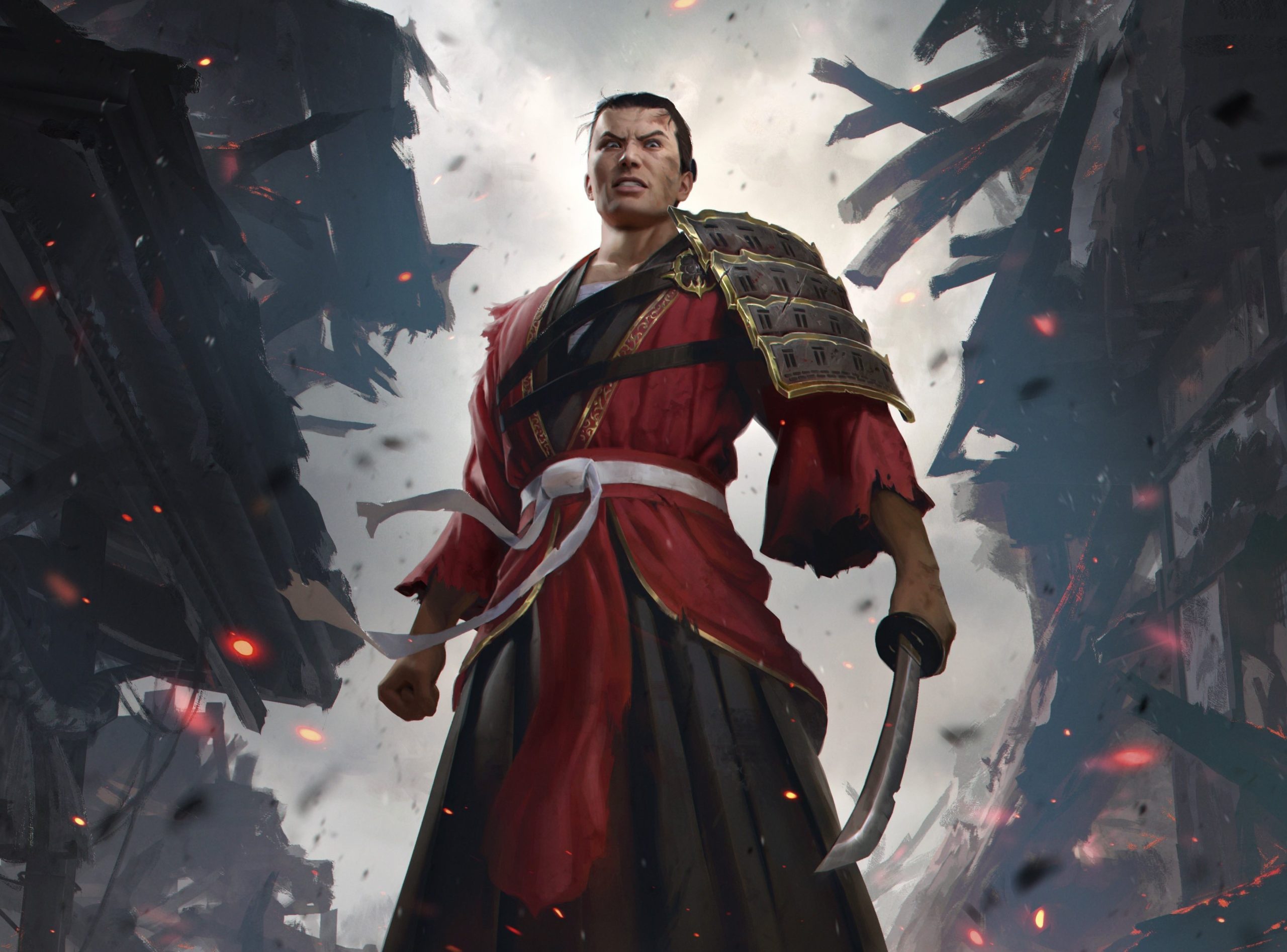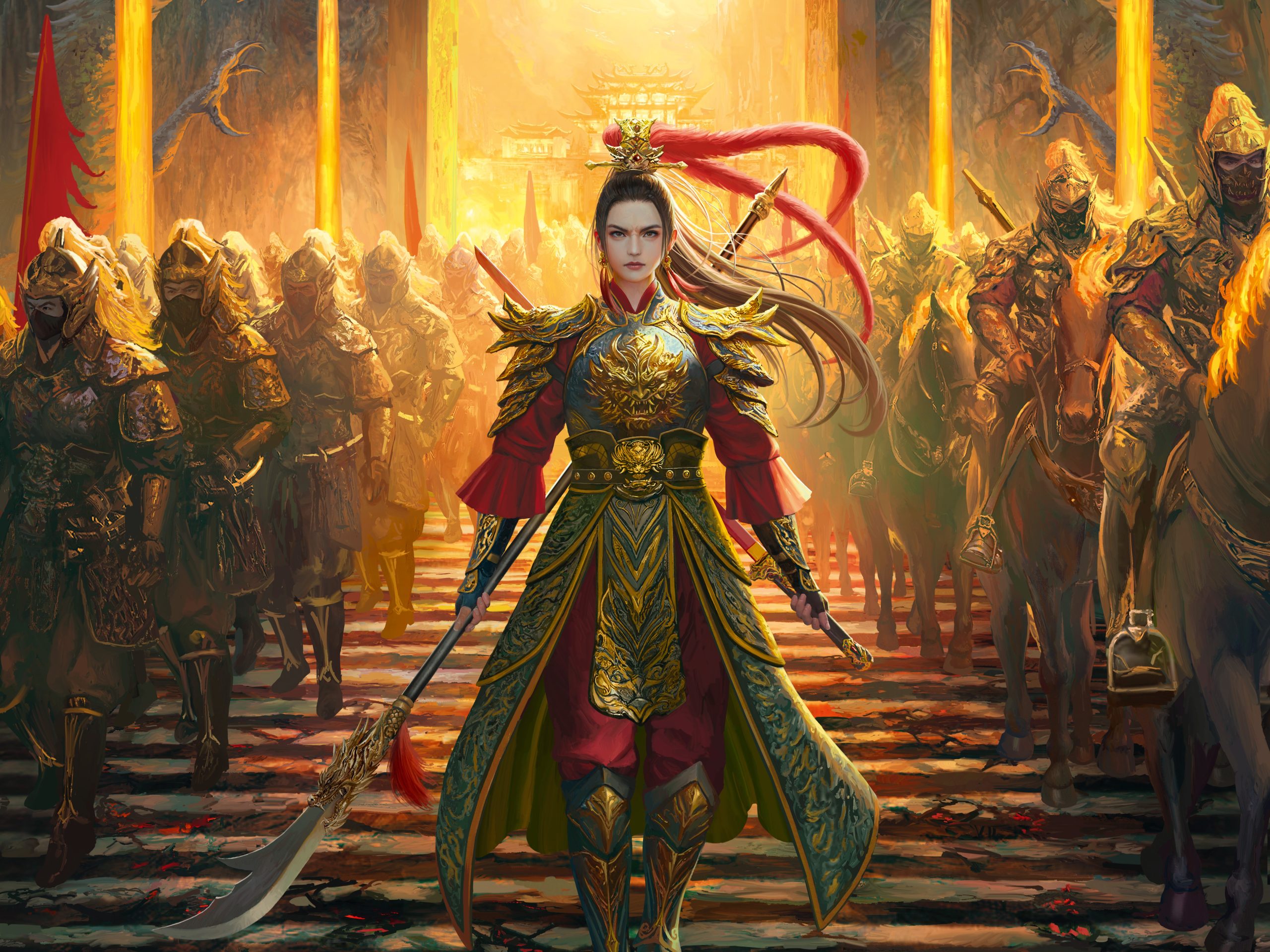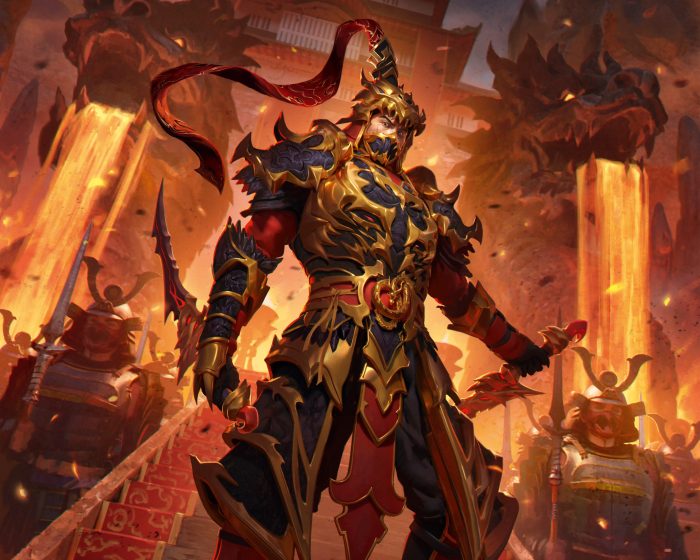Fang is a Royal Draconic Warrior wielding the fire of dragons in the palm of his hand. By proving his loyalty to the dynasty, he reaches volcanic levels of power!

How to Play Fang
Fang is all about swinging his daggers, fuelling them with fiery Draconic energy. Obsidian Fire Vein has a special ability that bolsters its power and gives it go again if you play a Draconic card while you’re attacking with it. Usually these take the form of attack reactions that you play after the opponent has decided how to defend, but there are a few exceptions we’ll dig into later.
Draconic cards can be identified by their volcanic border pattern and dragon symbol in their card text. Many cards in your deck have a bonus effect if they are played while you control 2 or more Draconic chain links. What this means is most of the time you’ll get the bonus by playing those cards while attacking with your second Obsidian Fire Vein. A standard Fang turn involves attacking with a dagger, playing a Draconic card to give it go again, then attacking with the other dagger, using your attack reactions to go over the top of the opponent’s defenses.
Fang has a special hero ability that comes alive once you have 3 or more Fealty tokens. In order to make a Fealty token, you’ll need to first mark the opposing hero, then hit them with an attack. There are a variety of cards in your deck that will mark the opponent, and once they are marked, they will stay marked until you land a hit!
Tricky Stuff
Attack reactions are played during the Reaction Step (after the opponent has decided how to defend). They aren’t attacks or chain links themselves, but rather they typically bolster the power of your current attack. Your deck also contains instant cards, which can be played at any time, even during the opponent’s turn. Most of the time though, you’ll want to play instants the same way you would play your attack reactions. Neither of these card types need go again, because they’re not actions.
When you attack, you open what’s called a combat chain, and each new attack is a chain link. If you attack with Obsidian Fire Vein, give it go again, then attack with the other Obsidian Fire Vein, you control 2 Draconic chain links on the combat chain. Be careful though, because playing an action that is not an attack will require you to close the combat chain first. This means it’s often better to play your non-attack actions (such as Sworn Vengeance), before you swing with your daggers, rather than in between swings. Playing reactions or instants won’t close the combat chain.
Sometimes you will activate a card that allows you to attack with your dagger an additional time. If you do this, and you move your dagger from where it was attacking earlier to the new chain link, note that you still control the original chain link where the dagger previously was, and that chain link is still considered to be Draconic.
There is a range of useful effects in Fang’s equipment. Vow of Vengeance gives you a one-time choice between marking Arakni, or defending with it. Coat of Allegiance gives you a spare resource on a critical turn, but note that you have to close the combat chain first to activate it, and after you use it you can only play Draconic cards (good thing you’ve got that Fealty token).
Blade Beckoner Gauntlets doesn’t break, but it does receive -1 counters equal to its defense. This means you can use it once defending a weapon attack (for 2), or you can use it to defend a regular attack from hand first (for 1) then use it a second time against a weapon attack (for 1). Red Alert Boots defends once, but gains higher defense if the opponent then activates an attack reaction.
How to Win with Fang
At the core of every decision you make should be the goal of achieving 3 or more Fealty tokens. This makes your daggers free to use, allowing you to use extra cards to defend with or pump up your attacks! This is an extremely powerful position to be in, and you should plan your turns in order to mark the opponent, protect your Fealty tokens by committing to playing a Draconic card every turn, and create bonus Fealty tokens whenever the opportunity arises.
Keep in mind that if you don’t create a Fealty or play at least one Draconic card every turn, you will lose all of the Fealty tokens you have built up! This can get dicey if you draw a hand without any Draconic cards. In situations like these, you can expend a single Fealty to turn a regular Warrior card Draconic, to ensure your daggers are turned on, or prevent the rest of your Fealty tokens from going away. While reaching 3 Fealty is the ultimate goal, don’t be so blinded by your devotion to the dynasty that you overlook a crucial moment to use them.
Fang wins through either going over the top of his opponent’s defenses to deal lethal damage, or forcing them to defend inefficiently so you can punish them for it. Fear is a powerful motivator, and sometimes it pays to keep an extra card in your hand so the opponent is unsure how many attack reactions are coming their way.
Another way to sidestep your opponent’s defenses is with Draconic instants. The opponent might heavily defend your first attack, expecting you to pile a lot of attack reactions onto it, but playing an instant like Tooth of the Dragon to give your dagger go again and carrying all the damage over to the second dagger is the perfect way to clean up a game.
















